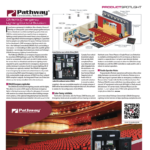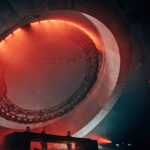In the last 12 months High End Systems has been very busy with the implementation of many exciting features into the Hog 4 family of consoles.
These features include: :
- Compound Fixtures
- Video Matrix Control
- Pixel Mapping Effects
- Patching Improvements
- Menu Window
- Cuelist XML Import/Export
Here are a few of my observations while exploring these new features:
Compound Fixtures
The Hog 4 now allows you to easily patch and select a fixture with multiple subparts (as is very common with LED fixtures). This feature is also very useful for combining multiple fixtures together that you intend to always select as a group (as in all the red par cans), a feature called fixture aggregation.
Video Matrix Control
The Hog 4 took another step toward the integration of video system control from a lighting console by adding the ability to control video matrix switchers like the Barco MatrixPro-II, Blackmagic Smart Video Hub, Lightware MX, and the AJA KUMO. Having the ability to control switching between camera and media server from a console for instance, means cue timing is in the hands of one programmer instead of two individuals.
Pixel Mapping Effects
The Hog 4’s Plots feature has some new pixel mapping effects designed to work in combination with the onboard PixelMap Layer.
Features like transparency effects, brightness controls and image wrapping tools can be applied to a PixelMap Layer within a plot without requiring an external media server.
I like the simplicity of the Plots screen, and find setting up a PixelMap not too difficult if just reading through the manual for the first time.
It is fast to set up and see results, taking a large part of the headache of using pixel mapping in a show out of the equation.

Patching Improvements
Hog 4 now allows you to skip DMX addresses between fixtures if necessary using a new syntax called “Gap.” To use this, simply use the @ key twice: [1+2 @@ 5 ] results in two fixtures patched with a gap of five DMX channels between. You can now also patch across multiple universes using syntax like [Fixture # @ 1/1/1 + 3/1/1] resulting in one fixture patched onto DMX universe 1 address 1 on DP8000 1 and 3. While not always necessary, it is nice to have some flexibility while patching in case of special circumstances.

Menu Window
New to Hog 4 is the ability to open a Menu window on any empty desktop. Simply double tap on the desktop and the Menu window appears, reducing the need to use the OPEN+ syntax. This also speeds up the process of creating VIEWS as well.
Cuelist XML Import/Export
Cuelist data can now be exported to an XML file, and Cuelist data from programs like Reaper and Inqscribe can be imported into Hog 4. While I can see why this may be useful, I’ve not had the need or opportunity to use this feature…yet.
Scale Masters
Hog 4 has finally implemented the long awaited Scale master functionality for controlling Fade Rates, Effect Size/Rates, and Chase Rates. Time to get out there and busk a show!
Command Keys
The Hog 4 Kind Keys can be assigned to control Cuelists, Scenes, and Macros in addition to the existing attribute kind mappings. I think opening up the KIND buttons and making them totally customizable like this is a very smart idea, and gives the programmer many more hard buttons for bump and flash buttons especially.
More to Come
A peek into upcoming releases reveals that High End isn’t stopping with these features. Here’s what’s on the near horizon:
- Improved Color Handling
- Batch Masters
- Fixture Builder
- Group Next/Back Selections
- Effects Synchronization
- Plot Fixture Icons and Background Images
- Auto Patch Media Servers
- User Preferences
- Fixture Patch Import/Export
In a nutshell, the Hog 4 software is gaining momentum, adding new features more regularly these days while building on the inherent simplicity of the syntax and programming environment common to the Hog lineage as seen in details like colorcoding in the menus and graphical nature of the screens. Hog programmers and fans will no doubt definitely appreciate the added functions and enjoy having some new powerful tools at their fingertips.
For more information on Hog 4 software, please visit www.highend.com.


